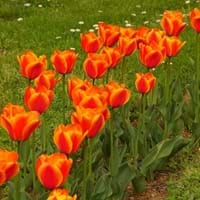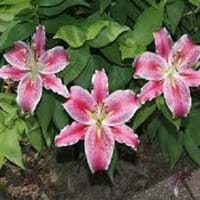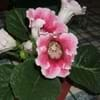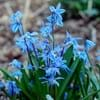Life Span
Annual
Perennial
Type
Bulb or Corm or Tuber
Bulb or Corm or Tuber
Origin
Hybrid origin, Europe, Turkey, Iraq, Iran, Asia, China
Hybrid origin
Types
Parrot Tulips, Triumph Tulips, Darwin Hybrid Tulips
Oriental White
Pink Oriental
Light Pink Oriental
Red Oriental
Habitat
Mountains, Temperate Regions
gardens, Tropical regions
USDA Hardiness Zone
4-8
4-8
Habit
Clump-Forming
Upright/Erect
Flower Color
White, Yellow, Red, Green, Purple, Orange, Pink, Rose, Coral, Peach, Burgundy, Plum, Bronze
Pink, Magenta, Rose
Flower Color Modifier
Bicolor
Bicolor
Fruit Color
Green, Tan
Green, Sandy Brown
Leaf Color in Spring
Green
Green
Leaf Color in Summer
Light Green
Light Green
Leaf Color in Fall
Several shades of Green
Several shades of Green
Leaf Color in Winter
Light Green
Light Green
Leaf Shape
Oblong
Heart-shaped
Plant Season
Spring
Summer
Sunlight
Full Sun, Partial Sun
Full Sun, Partial Sun
Type of Soil
Loam, Sand
Clay, Loam, Sand
The pH of Soil
Neutral
Neutral
Soil Drainage
Well drained
Average
Bloom Time
Early Spring, Spring, Late Spring
Summer
Tolerances
Drought, Shade areas
Drought
Where to Plant?
Ground, Pot
Ground, Pot
How to Plant?
From bulbs, Seedlings
From bulbs, From Rhizomes, Stem Planting
Plant Maintenance
Medium
Medium
Watering Requirements
Do not water frequently, Does not require lot of watering
Keep the ground moist but not water-logged, Water more in summer, Water when soil is dry
In Summer
Not so frequently
Lots of watering
In Spring
Moderate
Moderate
In Winter
Average Water
Average Water
Soil Type
Loam, Sand
Clay, Loam, Sand
Soil Drainage Capacity
Well drained
Average
Sun Exposure
Full Sun, Partial Sun
Full Sun, Partial Sun
Pruning
Cut leaves after fall, Remove damaged leaves, Remove dead branches, Remove dead leaves
Remove damaged leaves, Remove dead branches, Remove dead leaves
Fertilizers
9-9-6
All-Purpose Liquid Fertilizer
Pests and Diseases
Aphids, Gray mold, Nematodes, Red blotch, Snails
Red blotch
Plant Tolerance
Drought, Shade areas
Drought
Flower Petal Number
Single, Double, Semi-Double
Single
Foliage Texture
Medium
Medium
Foliage Sheen
Matte
Glossy
Attracts
Aphids, Caterpillar, Mites, Rodents, Squirrels
Butterflies, Hummingbirds
Allergy
contact allergic dermatitis
Asthma
Aesthetic Uses
Beautification, Bouquets, Cottage Garden, Showy Purposes
Beautification, Bouquets
Beauty Benefits
Not Available
Not Available
Environmental Uses
Air purification
Air purification
Medicinal Uses
Skin Disorders, Skin irritation
Cough, Fever, Stomach pain, tuberculosis
Part of Plant Used
Flowers
Flowers, Leaves
Other Uses
Showy Purposes, Used As Food, Used as Ornamental plant, Used for its medicinal properties
Making Perfumes, Showy Purposes, Use in Chinese herbology, Used as Ornamental plant, Used for fragrance
Used As Indoor Plant
Sometimes
Yes
Used As Outdoor Plant
Yes
Yes
Garden Design
Bedding Plant, Container, Cutflower, Edging, Feature Plant, Foundation, Mixed Border, Rock Garden / Wall
Container, Cutflower, Mixed Border
Botanical Name
TULIPA
LILIUM 'Acapulco'
Common Name
Tulip
Acapulco Oriental Lily, Oriental Lily
In Hindi
ट्यूलिप
ओरिएंटल लिली
In German
Tulpe
Orientalische Lilie
In French
Tulipe
Lily Oriental
In Spanish
tulipán
lirio oriental
In Greek
τουλίπα
Oriental Lily
In Portuguese
Tulipa
Lily Oriental
In Polish
Tulipan
Oriental Lily
In Latin
Tulip
Oriental Lily
Phylum
Magnoliophyta
Not Available
Class
Magnoliopsida
Not Available
Family
Liliaceae
Liliaceae
Clade
Angiosperms, Monocots
Angiosperms, Monocots
Tribe
Not Available
Lilieae
Subfamily
Lilioideae
Lilioideae
Importance of Tulip and Oriental Lily
Want to have the most appropriate plant for your garden? You might want to know the importance of Tulip and Oriental Lily. Basically, these two plants vary in many aspects. Compare Tulip and Oriental Lily as they differ in many characteristics such as their life, care, benefits, facts, etc. Every gardener must at least have the slightest clue about the plants he wants to plant in his garden. Compare their benefits, which differ in many ways like facts and uses. The medicinal use of Tulip is Skin Disorders and Skin irritation whereas of Oriental Lily is Cough, Fever, Stomach pain and tuberculosis. Tulip has beauty benefits as follows: Not Available while Oriental Lily has beauty benefits as follows: Not Available.
Compare Facts of Tulip vs Oriental Lily
How to choose the best garden plant for your garden depending upon its facts? Here garden plant comparison will help you to solve this query. Compare the facts of Tulip vs Oriental Lily and know which one to choose. As garden plants have benefits and other uses, allergy is also a major drawback of plants for some people. Allergic reactions of Tulip are contact allergic dermatitis whereas of Oriental Lily have Asthma respectively. Having a fruit bearing plant in your garden can be a plus point of your garden. Tulip has no showy fruits and Oriental Lily has no showy fruits. Also Tulip is not flowering and Oriental Lily is not flowering . You can compare Tulip and Oriental Lily facts and facts of other plants too.





